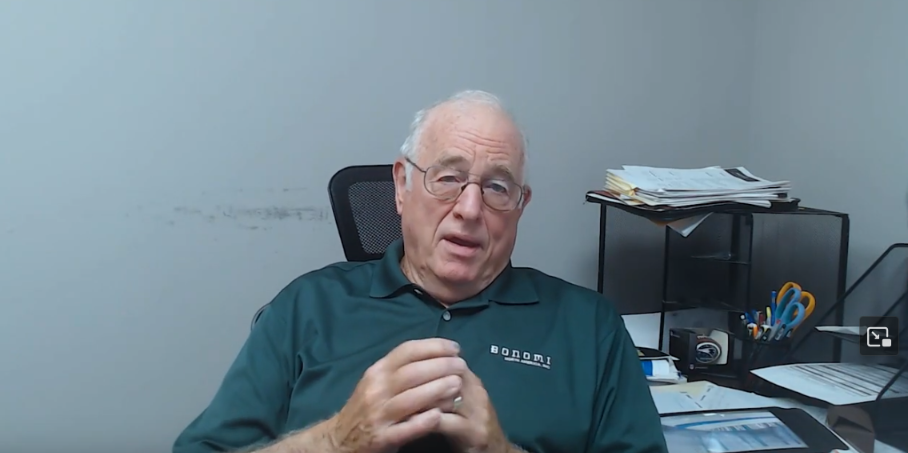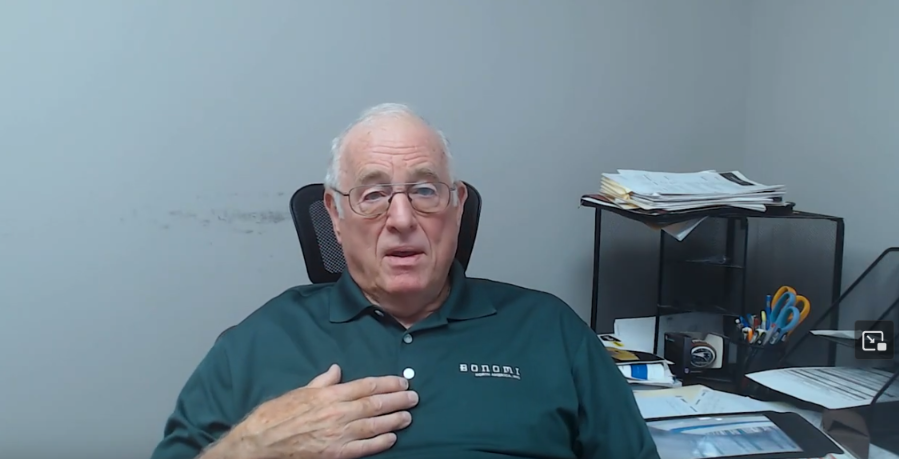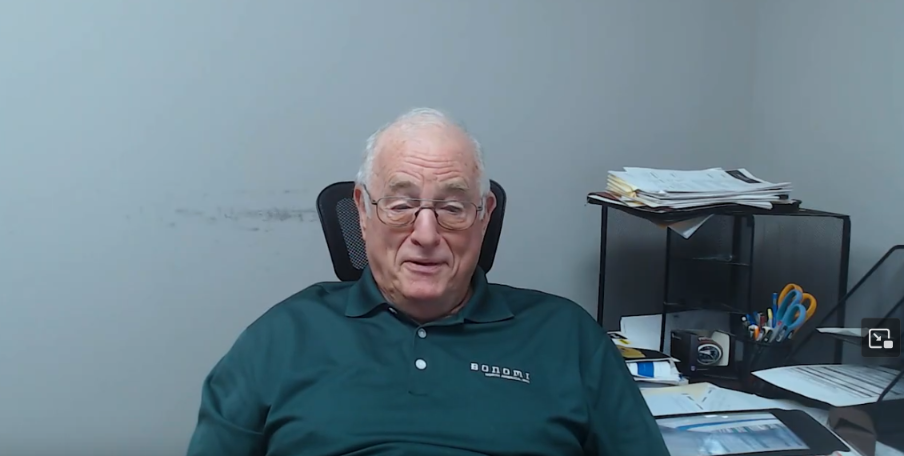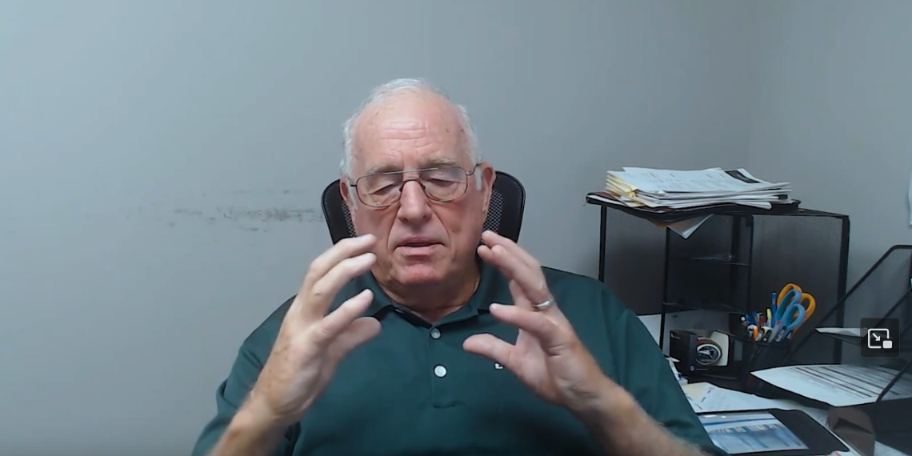From the DMZ to Bonomi: Rick Wentzel’s Valve Legacy
Posted by Gilbert Welsford, Jr on Oct 20th 2025
In the inaugural episode of the Fully Open podcast, host Gil Welsford sits down with Rick Wentzel of Bonomi North America to explore a career that spans Vietnam, Christmas Eve robberies, and the revolution of ball valve technology.

The Unlikely Beginning
Rick Wentzel's path to becoming a valve industry veteran began in the most unlikely of places: the DMZ of Vietnam. After graduating from St. Michaels, a small college in Vermont, in 1969, Wentzel faced the same fear that haunted many young men of his generation—the draft. As one of the last draftees of the Vietnam War, he served a year as a platoon Sergeant in the 101st Airborne.
"When I came home, I didn't know what I wanted to do," Wentzel recalls. "I spent six months just 'finding myself,' as they said in those days." That period of self-discovery came to an abrupt end when his mother intervened with some tough love: "Rick, you're getting lazy. You gotta go look for a job."
With his late father's background in the plumbing and heating supply business providing a connection, Wentzel interviewed with Watts Regulator and landed a position as a salesman covering territory outside of Boston. His first assignment at the company's national sales meeting? Serving as the bus driver, shuttling attendees to and from the airport.
But it was his second assignment that would become one of the more memorable—and harrowing—moments of his early career. On Christmas Eve, Wentzel was dispatched to fix a circulator pump in what he describes as "a very nasty area." When he emerged from the basement at midnight, he was immediately robbed of his wallet.
"That was on a Friday afternoon," Wentzel remembers. "Saturday morning, I'm sitting in my living room in my underwear feeling sorry for myself." That moment of despair would bookend another pivotal moment in his career decades later, but first came years of building expertise and industry knowledge.

The Ball Valve Revolution
Wentzel's transfer to Chicago marked his true entry into the valve side of the business. At that time, in the early 1970s, an emerging technology was beginning to transform the industry: the ball valve. Two companies dominated the nascent market—James Berry on the industrial side and Apollo Conbraco on the commercial side.
"In those days, in the 70s, there were no such thing as full port valves," Wentzel explains. "They used this term 'standard port,' which meant it's a reduced port. So the flow came out of the ball reduced."
The existing valve landscape consisted primarily of multi-turn options: gate valves that provided full flow when raised, globe valves with discs moving up and down for control, and plug valves with conical shapes and grease-lubricated metal-to-metal sealing. Ball valves and butterfly valves represented a new category: quarter-turn technology.
The origins of the modern ball valve trace back to post-World War II submarine technology. James Berry, working initially for another company, pioneered the use of Teflon (developed in 1938 and patented by DuPont) as a seating option for spherical valves. Interestingly, Teflon had first been used on the Manhattan Project before finding its way into industrial valve applications.
"He started James Berry and got sued by a bunch of his ex-companies," Wentzel notes, "but he was very successful and got the submarine contract for high-pressure hydraulic service, and that's how he got going."

Apollo's entry into the market came through a different route entirely. At an industrial show in Chicago, Wentzel found himself stationed next to an Apollo representative who shared an illuminating origin story. The rep had formerly represented James Berry but was terminated when the company decided to use direct employees instead of manufacturers' representatives in the Chicago market.
"He had this other line of boiler trim from Conbraco out of North Carolina," Wentzel recounts, "and he convinced the owner, Mosaic, to make a ball valve like James Berry but with a bigger hole in it and make it out of bronze instead of steel so we can sell it into the commercial market."
Worcester Controls added another innovation to the evolving technology: the three-piece maintenance-style valve. Engineers who had left James Berry developed this design featuring a center section and two end caps, allowing technicians to remove bolts, roll out the center section, and replace seats without removing the entire valve from the line.
"That went on forever as a great feature," Wentzel observes, "until the labor got too expensive, and today it costs more to repair the valve than to put a new one in."
Marketing as Education
After conducting ball valve market research in Chicago, Wentzel returned to New England as the product manager for ball valves at Watts. This role marked a pivotal shift in his career trajectory.
"That's where I learned more about marketing than sales," he reflects. "I'd been a salesman for a handful of years, but marketing is what I really fell in love with because the way we came to market was design and education—teaching others how to sell the product, the features and benefits, advertising. I became that singular person."
As national sales manager, Wentzel helped build Watts' industrial division from zero to $50 million within seven years. He joined when the company had $16 million in annual revenue; by the time he left, it had grown to a billion-dollar enterprise that had gone public.
"It went public, and it wasn't fun anymore," he admits, capturing the common tension between entrepreneurial culture and public company pressures.
His approach to marketing was forged in the crucible of failure. Early in his career, Wentzel was assigned to train apprentice plumbers at trade schools in Boston on relief valves. These sessions ran from 6:30 to 8:00 PM, with students arriving directly from job sites.
"Ten minutes into the presentation, I'd look over this big auditorium and there's 30 or 40 kids and they're all asleep," he recalls with a laugh. "I was so embarrassed. I didn't want to do it."
The experience taught him invaluable lessons about engagement: "What I learned was high and low pitch in your voice, and concentrate on the big sleeper. Ask him questions. So we changed our method of training into asking questions of the audience. They stayed awake."

But perhaps the most critical insight Wentzel gained was about competitive knowledge. "To sell your own product, you had to know your competitor as well as you knew your own product," he emphasizes. "You had to know their product—the pluses, how good it was, but also the drawbacks."
This philosophy served him well throughout his career. "I got to the point industrially that I could go into a chemical plant and tell you whose valve was up on the pipe from about 50 feet away."
Wentzel draws a clear distinction between marketing and sales: "Marketing is the idea—you remember the old comic strips where the guy had an idea and it was a light bulb? Well, that's marketing to me. Sales is taking your hand on the long chain from the light bulb and turning it off—execution."
Building the Bonomi Connection
Relationship Turning Point
Every major opportunity in Rick Wentzel’s career began with a relationship, not a sales pitch. That approach led to a Saturday morning phone call from Aldo Bonomi — a moment that forever changed his path and left a lasting mark on the industry.
In the early 2000s, Wentzel moved to Conbraco in Charlotte, North Carolina, taking charge of commercial products including backflow preventers, heating products, and relief valves, eventually adding ball valves to his portfolio. The company, privately owned, reminded him of Watts in its earlier days.
"We built two divisions there, very successful," he says. But by 2001-2003, family difficulties led to a loss of control, and the company began eliminating senior management positions.
During this turbulent period, however, Wentzel had been working on sourcing ball valves from Italy. During his search for private label options for Apollo, he encountered Aldo Bonomi. Together, they developed a new ball valve called the 64 series, which became a significant success.
"Right after that, the deterioration of the ownership forced them to sell," Wentzel explains. "The banks took over temporarily, and the first thing they did was get rid of senior management. So we all lost our jobs."
It was Friday afternoon when Wentzel received the news. The next morning brought an unexpected phone call that would define the next chapter of his career. "I'm sitting in my living room in my underwear feeling sorry for myself, and I got a call from Aldo Bonomi."
Bonomi wanted to start his own company in the United States. Initially, Wentzel was hesitant: "I said, 'I don't think I want to sell brass ball valves the rest of my life.'" But Bonomi, in broken English, insisted he owned other companies beyond brass valves.
A visit to Italy revealed the full scope of Bonomi's operations: carbon steel facilities, stainless steel manufacturing, an actuator company, and brass production. Wentzel and Bonomi launched Bonomi North America in Rock Hill, South Carolina in 2003.

"Today, Aldo has gone out and bought other companies," Wentzel notes. "He owns 12 companies now in Italy and is about to land himself in the United States as a manufacturer."
The Automation Revolution and ISO 5211
One of the most dramatic shifts Wentzel has witnessed over his 54-year career is the transformation of valve automation. "In the late 70s, the average automated ball valve in the industry was 3 inches," he observes. "Today it's less than 3/4 inch."
The driving force? Labor costs and the desire for computerized plant control systems. Where automated valves were once the exception, they've become the rule, with distributors reporting that 80-90% of quarter-turn products now ship with automation.
Another significant change has been the industry-wide adoption of full port ball valves. "In the 70s, there were no such thing as full port," Wentzel reiterates. What were called "standard port" valves were actually reduced port designs. As manufacturers realized that producing full port valves didn't significantly increase costs while substantially increasing value, the full port configuration became the industry standard.
But perhaps Bonomi's most significant contribution to the North American market was pioneering the direct mount actuator system based on ISO 5211 standards. While Americans in the 1990s associated ISO primarily with quality manufacturing standards like ISO 9001, European manufacturers had developed comprehensive design standards for valves and actuators.
"In the United States, we were probably 10 years behind the times," Wentzel admits. "Finally, companies like Bonomi came over and started educating. They brought that technology to the United States."
The innovation that enabled this compact direct mount design was a dramatic reduction in operating torque. Bonomi's Italian engineers achieved this through several key advances:
First, they developed methods to machine balls to precise roundness with mirror finishes. Second, they engineered specialized seat designs using O-rings to back up Teflon seats both upstream and downstream, while eliminating Teflon from the stem packing in favor of O-ring seals. Third, they manufactured stems on special lathes rather than screw machines, creating mirror-finished surfaces with minimal friction.
"By doing so, they dropped the torque," Wentzel explains. The reduced torque allowed for much smaller actuators.

The final piece was integration. "Bonomi also makes actuators, so they made the actuator and the ball valve as a married package, meaning that the stem fits so tight that you couldn't have any slop between the two."
This integrated approach addressed a common industry problem. "When I was at Apollo, we bought actuators from the outside and made the valves," Wentzel recalls. "We had issues where the actuator company blamed the valve wasn't designed right, and the valve company blamed the actuator. At Bonomi, we make both. The buck stops here."
The Wisdom of Patience
Gil Welsford shares a story from his own family history that resonates with Wentzel's later career philosophy. His grandfather, Fred Welsford, once spent 55 minutes in a DuPont plant office talking with a customer about hunting or fishing—anything but valves. Only in the final five minutes did he mention his line card.
Gil's father, then 19 years old and learning the business, thought it was "the worst call ever" because they hadn't discussed valves. His grandfather's response: "Son, that's the best call you'll ever have because people buy from people."
This philosophy aligns perfectly with the advice Wentzel would give his 25-year-old self starting out at Watts Regulator. "If I had to do it all over again, I would say let the job come to you," he reflects. "I was so excited and ready to go—maybe it was the way I was coming back from the war, I don't know—but I was nervous and jumpy and ready to attack and sell."
The alternative approach, he's learned, is more powerful: "I would talk to the person I'm selling to and ask them questions about their lives, not mine, not my product first. Ask them what makes them tick and listen. You're going to open up better dialogue with your customer by listening and understanding their needs before talking about your product."
He illustrates this with a simple observation: "How many times do you go into someone's office and see a picture of a Little League team or college team? Maybe he's a coach, maybe he finances it, maybe he's just a great fan. That's more fun to start off with in life."

The Evolution of Industry Standards
Throughout his training sessions—which Welsford enthusiastically recommends, noting that his entire ValveMan team participates—Wentzel emphasizes the enduring importance of codes and standards. Despite all the technological advances, the foundational standards remain remarkably stable.
"ASTM and ANSI—which is now ASME—are from 1918 and 1920, from the military ships," he notes. "ASTM governs the materials, and ASME governs the design."
However, one significant change has occurred in enforcement. "ANSI never had a police presence—they would just self-certify yourself," Wentzel explains. But after the merger creating ASME, the organization gained enforcement authority similar to what had existed for tanks, reservoirs, compressors, water heaters, and boilers.
"Today, they can come into your plant within 24 hours notice and look at your valves that are ASME-rated and tell you whether you pass," he says. "So now you have a police presence from ASME governing whether these meet standards or not."
The Changing Distribution Landscape
Another transformation Wentzel has witnessed involves the technical expertise within distribution channels. "In the 70s, 80s, and into the 90s, the pipe, valve, and fitting houses had their own actuator expert," he recalls. "He was the guy that chose whose actuator they would sell and whose valve they would sell."
This arrangement worked until it didn't. "Eventually, he either took another job, went on vacation, or finally retired—and he took the knowledge with him. This is factual throughout North America. Those PVF houses eventually disappeared from doing actuation on their own."
The vacuum created by these departures opened opportunities for a new generation of technically sophisticated distributors like ValveMan, who could provide the expertise that had evaporated from traditional channels.
Welsford notes that Bonomi was among the first to embrace this new distribution model when Valvan launched 15 years ago. "Going online was a little bit of a... it wasn't very popular. We were very early," he reflects. "But we have had a really great relationship because of that."
Wentzel's willingness to take chances on new distribution models mirrors his presence at other industry inflection points—from the early days of ball valve adoption to the introduction of direct mount automation technology.
The Legacy of Bonomi North America
Looking Forward
Today, Bonomi North America represents 12 Italian companies throughout North America from their Charlotte headquarters, with plans to begin manufacturing in the United States. The company's integrated approach—manufacturing both valves and actuators, maintaining substantial inventory, and building automated packages to order—positions them well for the market's evolution.
For Wentzel, now in his 54th year in the industry, the journey from that Christmas Eve robbery to becoming a respected voice in valve technology has been marked by continuous learning, adaptation, and a willingness to embrace change.
His philosophy, hard-won through decades of experience, remains refreshingly simple: understand your competitors as well as your own products, engage through questions rather than presentations, and remember that at the foundation of every transaction is a relationship between people.
“Have more patience and understanding of your customer’s needs,” he advises. “Ask them without talking about your product first.”
It's wisdom that applies far beyond the valve industry—but has served one veteran salesman exceptionally well through more than five decades of remarkable change.

The Fully Open Podcast explores the business, legacy, and resilience of the valve industry through conversations with industry veterans and innovators. Listen to the full conversation with Rick Wentzel on your preferred podcast platform.

 888-825-8800
888-825-8800









